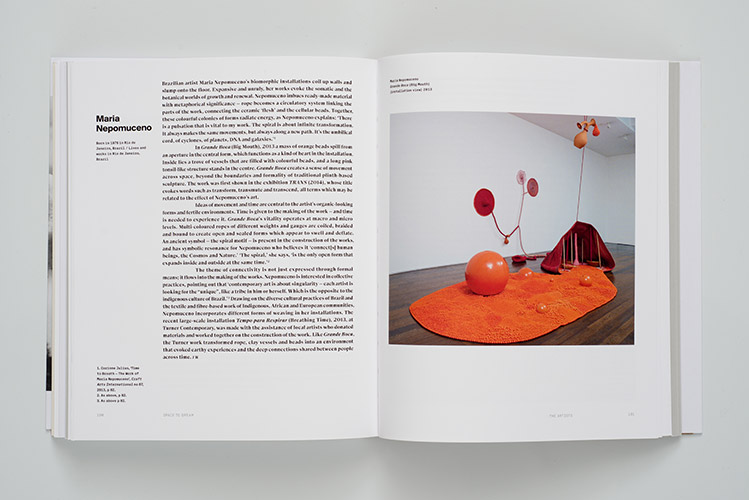From the very outset of our Space to Dream project the publication component was envisaged as being ambitious. It couldn’t have been anything less. To faithfully represent the purpose of the exhibition and the complexity of the exchanges that brought the project to fruition, our publication needed to speak confidently across different cultures and into new spaces. It needed to inform and act as an agent of sorts in the South–South conversation that co-curators Beatriz Bustos Oyanedel and Zara Stanhope were engaged in and wanting others to join.
It was obvious that the publication’s substantial contextual and curatorial essays needed to be bilingual – Spanish, South America’s predominant language – and English. There would have been no point publishing a book that conveyed ideas about a Global South conversation in English alone. So our first challenge was make that happen.
We needed a Spanish editor to join me, the Gallery’s editor, in managing the texts. Fortunately we found the perfect person. Marcela Fuentealba, a brilliant Chilean who is fluent not only in English but also in the art history of South America, came on board as Spanish language editor. Between us we managed the commissioning (with the co-curators), translation, editing and proofreading of the book’s six long bilingual essays and interviews, and the 42 artist-page texts and biographies.
Marcela’s publishing and distribution company Hueders agreed to distribute the book, so it is now available in South America, the US and Spain. Because there’s substantial bilingual component, the publication is able to travel to those Spanish-speaking countries and invite readers into an ever-expanding, ever-deepening South–South conversation. The book’s success in this regard rests firmly with Marcela and her team – and of course with the many writers, including luminaries of the art practices of South America and experts in the related critical discourse.




